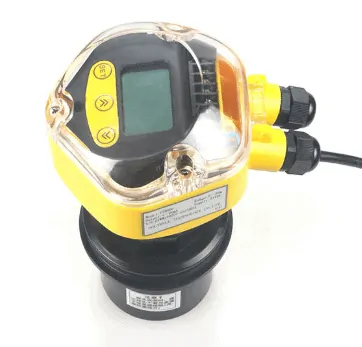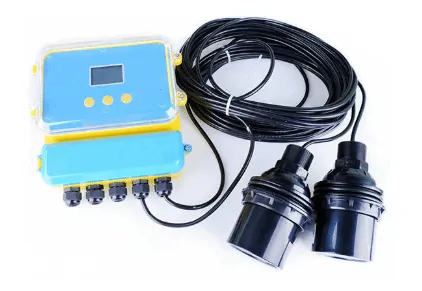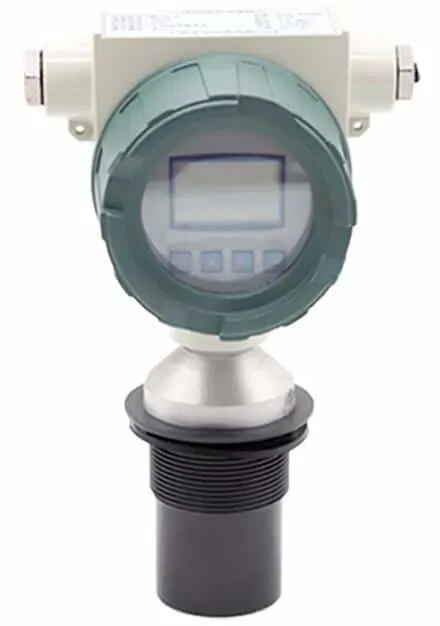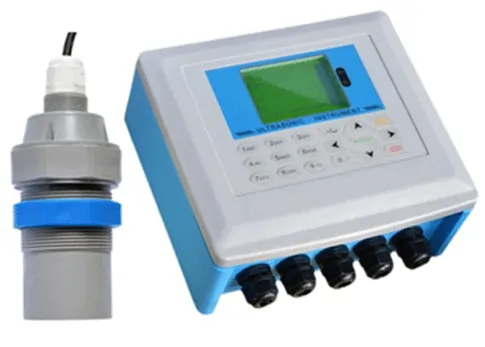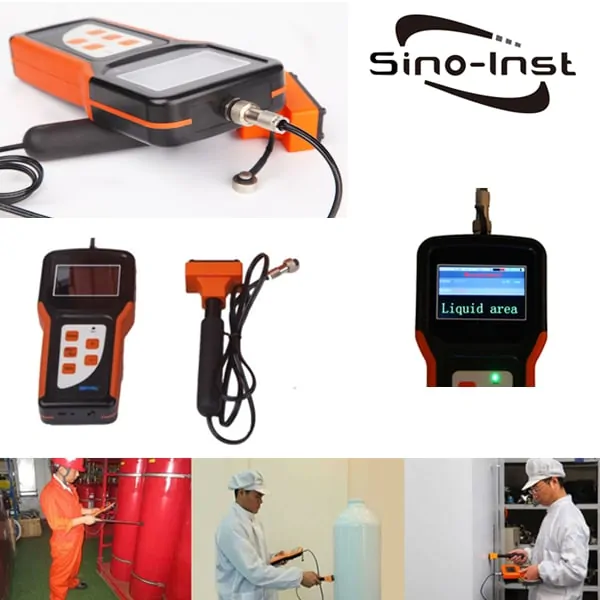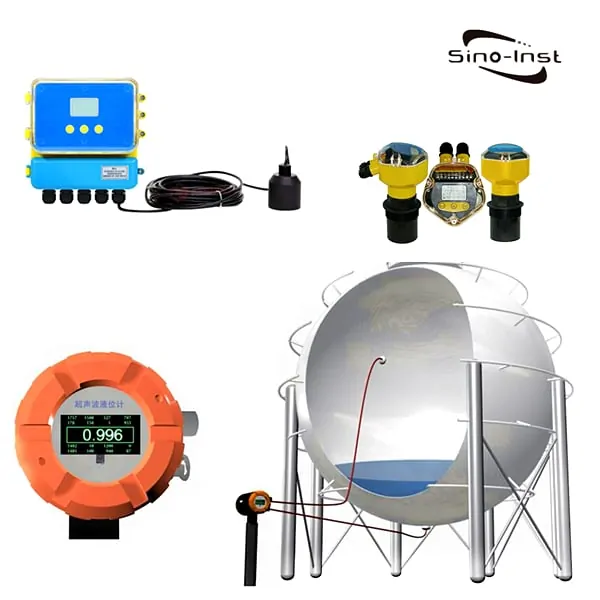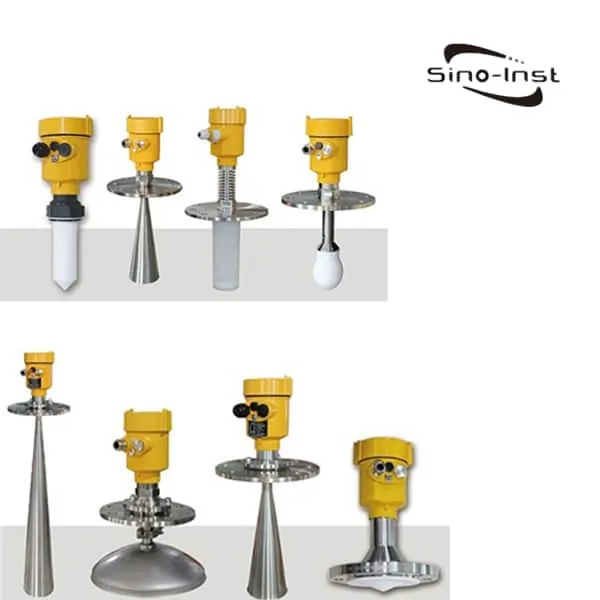Solid Level Sensor continuously detects changes in the level of solid materials. Monitor and Indicate the level of bulk solids in silos, storage tanks, or other containers.

A solid Level Sensor is very important for the production process. Fly ash powder measurement. Chemical plant level measurement. Cement silo powder measurement. Controlling the change of material level can maximize the efficiency, prevent overflow, exhaust, or track the volume or mass. SIRD-703 GWR Bulk Solids & Powder Solid Level Sensor is mainly suitable for solid powder level measurement.
Sino-Inst offers a variety of Solid Level Sensors for industrial level measurement. If you have any questions, please contact our sales engineers.
Solid Level Sensor is mainly divided into two categories: continuous type and switch type continuous type. Continuous type includes ultrasonic wave and guided wave radar. There are many types of switches. Rotary resistance, tuning fork, capacitance, heavy hammer, RF admittance.
Features of SIRD-703 GWR Solid Level Sensor
- The guided wave radar level meter is highly versatile. It is suitable for the measurement of acids, alkalis or other corrosive media
- Anti-hanging material. The unique circuit design and sensor structure of the guided wave radar level meter make its measurement not affected by the hanging material of the sensor. No regular cleaning is required to avoid false measurements.
- Maintenance-free. The guided wave radar level gauge has no moving parts during the measurement process. There is no damage to mechanical parts and no maintenance is required.
- Anti-jamming. Contact measurement by guided wave radar level meter. Strong anti-interference ability, can overcome the influence of steam, foam and stirring on the measurement.
- Accurate and reliable. The measurement volume of the guided wave radar level gauge is diversified, which makes the measurement more accurate. The measurement is not affected by environmental changes, with high stability and long service life.
Extended reading: Radar level sensor for solids – Dust solid level measurement
Specifications of SIRD-703 GWR Solid Level Sensor
| Suitable for Medium: | Solid powder |
| Application: | Cement silo powder measurement; Ash powder measurement |
| Explosion-proof Grade: | Exia IIC T6 Ga/Exd IIC T6 Gb |
| Measuring Range: | 30m |
| Frequency: | 500MHz-1.8GHz |
| Antenna: | Double cable type antenna |
| Accuracy: | ±10mm |
| Process Temperature: | (-40~150)℃ |
| Process pressure: | (-0.1~4)MPa |
| Signal output: | (4~20)mA/HART |
| The Scene Display: | Four LCDs/Can be programmed |
| Power Source: | Two-wire (DC24V);Four-wire(DC24V/AC220V) |
| Shell: | Aluminum /Plastic |
| Connection: | Flange (optional) / Thread |
The Advantages and Disadvantages of GWR Bulk Solid Level Sensor
Guided wave radar liquid level gauge is a contact type liquid level gauge. Its working principle is to use electromagnetic waves to transmit signals-reflect-receive signals. Unlike conventional radar level gauges, guided wave radar requires a medium to transmit signals. This medium can be a rod or a cable, depending on the installation environment. So what are the advantages and disadvantages of the guided wave radar level gauge compared with other level gauge products? Let us explain for you.
Advantage:
- Can measure a variety of different media. Including liquid, solid, particles, powder, etc., and will not be affected by the density or temperature of the media.
- Continuous measurement, safe, stable and reliable.
- For the medium with a low dielectric constant, a guide rod can be added to improve the accuracy of the measured data.
- The fluctuation of the level has little effect on the measurement results.
- The signal is stable and the anti-interference ability is strong.
- Vapor or foam will basically have no effect on the measured data.
- Two output modes of 4~20 or digital signal adapt to different installation environments.
- Guided wave radar level sensors have various materials, process connections, probe types and accessories to provide this option.
- Guided wave radar level sensor is suitable for small storage tanks, storage tanks with complex geometric shapes, and when there are obstacles in the tanks. It is not affected by the mechanical design of the bypass pipe. Thereby minimizing the risk of leakage.
Disadvantages:
- Because it is a contact measurement, for those flammable and explosive media, a higher explosion-proof level is needed to deal with it.
- Compared with the non-contact horn radar level sensor, the guided wave radar level sensor directly comes into contact with the measured medium. Therefore, the daily maintenance of the guide rod is relatively more.
- The volume is relatively large, and transportation is not convenient.
- If measuring a solid medium, the medium needs to be kept horizontal. And the dust can not be much, otherwise it will affect the measurement accuracy.
- The measuring guide rod or cable is easy to foul, and it needs to be cleaned regularly.
- The price is higher than other level sensor products.

Solid State Level Sensors
Solid state-level sensors perform real-time detection of changes in the height of solid materials in the container. Solid state-level sensors are also called level transmitters, level controllers, bulk solid level sensors, dry material level sensors, etc.
Solid state-level sensors are mainly divided into two categories: continuous type and switch type.
Continuous type includes ultrasonic and guided wave radar.
There are many types of switch type, resistance rotary type, tuning fork type, a capacitive type, heavy hammer type, RF admittance.
Among them, the resistance-rotation and tuning-fork level gauges have high requirements on the use occasions, and are not resistant to impact, and cannot measure viscous materials.
The capacitive type should be said to overcome the shortcomings of other level gauges, but it cannot identify fake materials. In order to overcome this defect, a radio frequency admittance level meter was developed on the basis of capacitance.
ultrasonic level sensor for solids
Multiply the time from ultrasonic transmission to reception by the speed of sound to calculate the height of the material level. Since the air temperature will affect the speed of sound wave propagation, the air temperature needs to be measured to correct the speed of sound. The ultrasonic level meter is suitable for measuring the block material level with larger granularity.
The top of the storage warehouse is equipped with an ultrasonic generator and a receiver. The ultrasonic wave emitted by the generator is reflected by the air layer to the material surface, and part of the reflection is received by the receiver.
Capacitive level sensor for solids
In general, capacitive level gauges are not affected by the environment such as vacuum, temperature, and pressure. Firm structure, convenient installation, easy maintenance, and low price.

However, capacitive level gauges have certain limitations in use. There are many types of capacitive level gauges. It can measure both conductive and non-conductive media. It can also measure the liquid level of high-speed containers caused by tilting and shaking.
The medium requirement of the measured object of the capacitive level meter is not as strict as other meters. It can not only control the liquid level but also continuously measure, so it can be regarded as a common measuring instrument.
When measuring continuous liquid levels, concentric cylindrical capacitors are generally used. In principle, cylindrical capacitive object flow meters can detect the level of conductive liquids. It can also detect the level of solid particles.
If the medium to be measured is a conductive liquid, the circular electrode will cause a short circuit in the conductive liquid. Therefore, when measuring the level of conductive liquids, the electrodes must be covered with insulators.
Extended reading: Radar Level Meter for Corrosive Liquids
Non-Contacting Radar Level Measurement
Radar level transmitters use radar technology to perform the non-contact continuous level measurement. The radar level indicator converts the level into an electrical signal. The level signal output can then be utilized by other instrumentation to monitor or control. Liquids and solids are commonly measured with this measuring technique. Like: Fly ash silo. Radar level sensors are divided into: Pulsed radar technology and frequency modulated continuous wave (FMCW) radar level sensors.
Extended reading: Solid flow meter | For bulk solids-powder-soybean-cement
Frequently
Asked
Questions
Related Blogs
Sino-Inst offers over 10 GWR Bulk Solids & Powder Solid Level Sensors for level measurement. About 50% of these are float liquid level meters, 40% is the level switches.
A wide variety of Solid Level Sensors options are available to you, such as free samples, paid samples.
Sino-Inst is a globally recognized supplier and manufacturer of Solid Level Sensors instrumentation, located in China.
Request a Quote

Wu Peng, born in 1980, is a highly respected and accomplished male engineer with extensive experience in the field of automation. With over 20 years of industry experience, Wu has made significant contributions to both academia and engineering projects.
Throughout his career, Wu Peng has participated in numerous national and international engineering projects. Some of his most notable projects include the development of an intelligent control system for oil refineries, the design of a cutting-edge distributed control system for petrochemical plants, and the optimization of control algorithms for natural gas pipelines.



